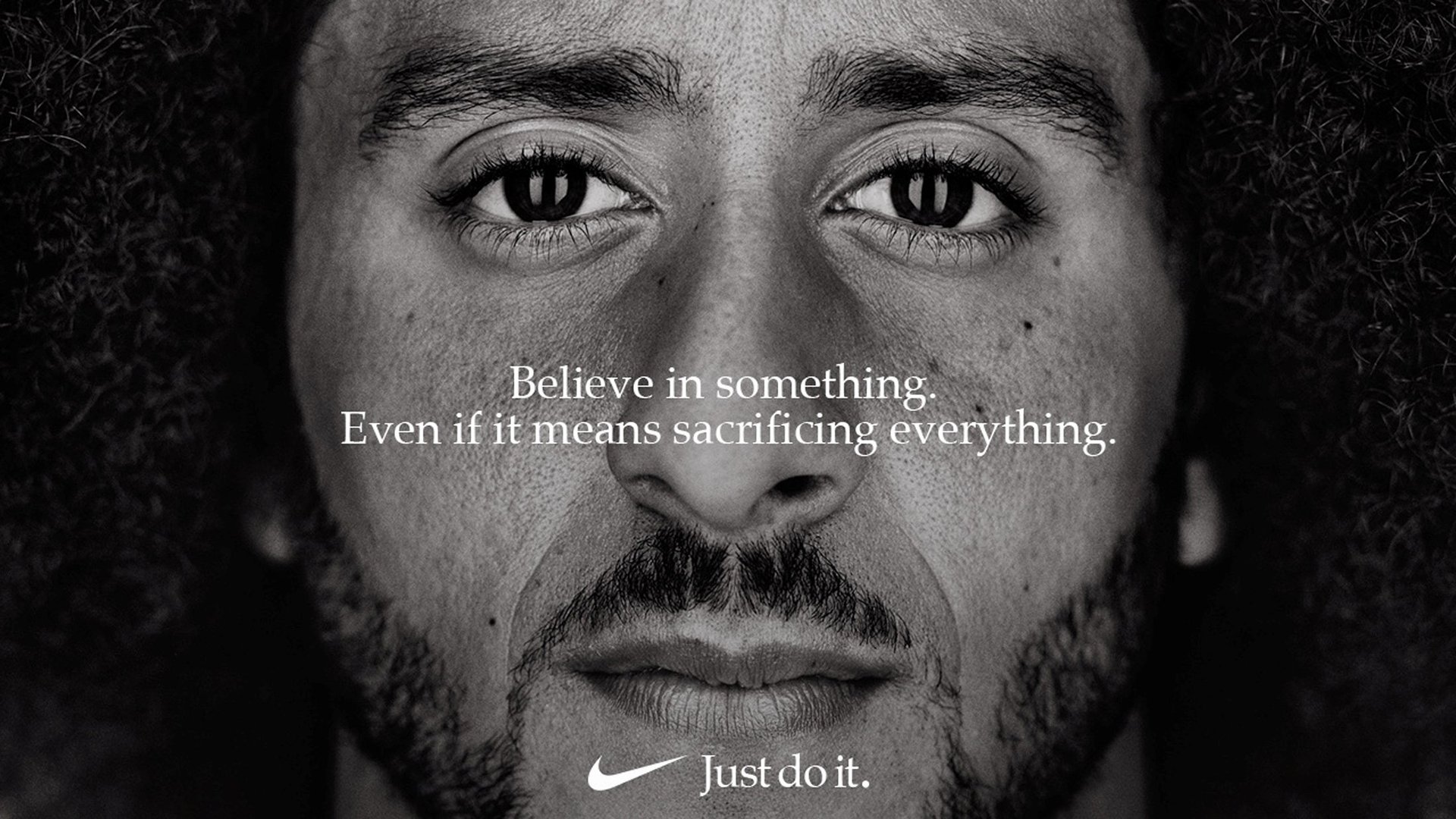A boycott over Colin Kaepernick isn’t likely to hurt Nike
The backlash came quick after Colin Kaepernick shared the picture, a black-and-white close-up of his face overlaid with the words, “Believe in something. Even if it means sacrificing everything.” At the bottom, Nike’s swoosh, followed by its well-known tagline: “Just do it.”


The backlash came quick after Colin Kaepernick shared the picture, a black-and-white close-up of his face overlaid with the words, “Believe in something. Even if it means sacrificing everything.” At the bottom, Nike’s swoosh, followed by its well-known tagline: “Just do it.”
Kaepernick is only one of several athletes, including Serena Williams, LeBron James, and Odell Beckham Jr., featured in the campaign, which celebrates the 30th anniversary of the “Just do it” slogan. But he’s a hugely controversial figure in the US after his decision to kneel during the national anthem at games, in protest of police shootings of black Americans—a decision he alleges has gotten him blacklisted by NFL teams.
Critics have called Kaepernick’s protests disrespectful, and a number of angry people took to social media this week to express their outrage at Nike by cutting up Nike products, burning Nike sneakers, and even calling for a boycott of the company.
It’s arguably a risk for Nike to feature Kaepernick, as the company could alienate a large number (paywall) of potential customers. But while a boycott might sting for a moment, it’s unlikely to hurt the brand on a grand scale. Nike knows exactly who its audience is, and what they support.
Opinions on Kaepernick’s form of protest tend to split along lines of politics, race, and—importantly—age. Progressives and black Americans generally side with Kaepernick, as do younger Americans (paywall). Those shoppers are key Nike customers, something the company must have considered when it opted to extend Kaepernick’s contract (paywall) and include him in its new campaign.
In fact, much of the response to Nike’s campaign—seemingly the majority—has been positive. Wrote Bob Cook in Forbes: ”Nike’s decision reflects that if it wants to keep its place among the most-beloved brands among the 18-to-29-year-old age group, it can’t be on the side of grumpy old white vice presidents walking out of NFL games on their boss’ orders to grandstand over players using the national anthem as an occasion to protest inequality and police shootings of unarmed black men.”
Of course, Nike is still gambling with some customers. As Neil Saunders, managing director of GlobalData Retail, noted in a report, according to CBS, “Although the company’s stand may go down well on its native West Coast, it will be far less welcome in many other locations.”
It’s a valid point. But not all shoppers will care enough to boycott, and Nike actually sees big cities—where many of its aforementioned core customers live—as having the greatest potential for its business. In 2017, the company announced a new strategy to focus on key cities that include New York, Los Angeles, London, Shanghai, Beijing, Seoul, and Mexico City. Nike, of course, is also a global brand; while the US is its biggest and most important market, it makes up less than half of total sales, meaning most Nike customers probably don’t have strong feelings about Kaepernick either way.
Since Donald Trump’s election, Nike has thrown up a progressive flag. So it didn’t look great when the company found itself on the receiving end of a gender-discrimination suit last month. Nike is publicly reaffirming its values now, and telling shoppers—including the young, racially diverse shoppers of the next generation—where it stands. It’s a calculated risk, but Nike isn’t likely to have to sacrifice everything for it.